What is Elon Musk's Starship?
Elon Musk is developing a vehicle that could be a game-changer for space travel. Starship, as it's known, will be a fully reusable transport system capable of carrying up to 100 people to the Red Planet.
The founding ethos of Elon Musk's private spaceflight company SpaceX was to make life multi-planetary. This is partly motivated by existential threats such as an asteroid strike big enough to wipe out humanity.
Settling other planets would place some of the eggs in other baskets, sparing human civilisation if one of them were to experience a cataclysm.
In 2016, the entrepreneur outlined his rationale at an international conference in Mexico: "History is going to bifurcate along two directions. One path is we stay on Earth forever, and then there will be some eventual extinction event," he said.
"The alternative is to become a spacefaring civilisation and a multi-planet species, which I hope you would agree is the right way to go."
Musk has often spoken about his dream of building cities on Mars. He believes that settlements would need large numbers of people in order to become self-sustaining.
Realising this dream requires a vehicle that's up to the task. Starship is a rocket and spacecraft combination that could ferry more than 100 people a time to the Red Planet.
The system is designed to be fully reusable, meaning the principal hardware elements are not discarded in the sea or allowed to burn up, as happens with some other launch systems, but are instead recovered from space. They can then be refurbished and flown again, reducing the cost of the whole enterprise.
Starship: An overview
At launch, the spacecraft, called Starship, will sit atop a rocket called Super Heavy.
The combined system will stand 120m (394ft) -tall and is also referred to as Starship.
Let's take the spacecraft first. With its nosecone and landing fins, the stainless-steel vehicle resembles the rocket-ships from the golden age of science fiction.
At the rear of the 50m (160ft) -long craft are six highly efficient Raptor engines, developed over the course of a decade by SpaceX. The combustion takes place in stages, and the engine's design cuts the amount of propellant that's wasted.
Towards the middle of the vehicle are the propellant tanks. These feed liquid methane (CH4) and liquid oxygen (O2) to the Raptors.
Methane is the fuel and oxygen acts as an oxidiser - a chemical that makes the fuel burn. The combination is dubbed methalox.
The choice of fuel is unusual for rocket engines, but methane can generate plenty of thrust. It's also a prudent choice in light of Musk's designs on Mars. The SpaceX founder says that CH4 could be synthesised from Martian subsurface water and from atmospheric carbon dioxide (CO2), using a chemical process known as the Sabatier reaction.
Re-fuelling Starship for the return trip to Earth using Martian resources would confer a level of self-sufficiency, making journeys both more feasible and cost-effective.
Towards the front of the spacecraft - which is sometimes referred to as the upper stage - is a huge payload compartment that will be able to haul large cargo or people to destinations in deep space.
Now, let's turn to the rocket. Measuring 70m (230ft) -long, Super Heavy will be filled with 3,400 tonnes (6.8 million lbs) of cryogenic (chilled) methalox.
It will be powered by around 32 Raptor engines (this specification has changed several times) and should achieve more than 70 Meganewtons (16 million lbs) of maximum thrust. It should be able to lift at least 100 tonnes of payload, and possibly as much as 150 tonnes, to low-Earth orbit.
This will make Super Heavy more powerful than the immense Saturn V launcher used for the Apollo Moon missions in the 1960s and 70s.
Launch and re-filling
As it ascends from the launch pad, the combined Starship system will begin to pitch over towards the intended orbit.
When the upper stage separates in space, Super Heavy flips over while falling back towards Earth.
As it descends, Super Heavy will deploy steel structures called "grid fins", shaped a bit like potato waffles, from the sides of the booster. These will help steer the rocket stage back towards its launch pad so it can be flown again.
Previously, SpaceX had wanted to ignite Super Heavy's Raptor engines to guide it down to a precision landing on six steel legs. SpaceX does something similar with the first stages of its Falcon 9 rockets, landing them safely on landing pads and drone ships after a launch.
But this thinking has since changed: SpaceX now plans to catch the falling booster using an arm on the launch tower.
This is the structure that provides engineers and crew members with access to the spacecraft and rocket while they are sitting on the pad before launch.
Meanwhile, the Starship upper stage could be inserted into a "parking orbit" after separation, allowing it to be re-filled with propellant.
"If you just fly [Starship] to orbit and don't do any refilling, it's pretty good — you'll get 150 tonnes to low-Earth orbit, and have no fuel to go anywhere else," Musk explained during a conference keynote speech in 2017.
"If you send up tankers and re-fill in orbit, you could re-fill the tanks up all the way to the top, and get 150 tonnes [of payload] all the way to Mars."
To re-fuel, the spacecraft would dock, or mate, with another Starship - already circling the Earth - that acts solely as a propellant depot.
"The two ships would actually mate at the rear section. They would use the same mating interface that they use to connect to the booster on lift-off," Musk said in 2017.
"To transfer propellant it becomes very simple: You use control thrusters to accelerate in the direction that you want to empty."
What will Starship be used for?
For long-haul trips to Mars and back - which could take up to nine months each way - Musk is looking to install around 40 cabins in the payload area near the front of the upper stage.
"You could conceivably have five or six people per cabin, if you really wanted to crowd people in. But I think mostly we would expect to see two or three people per cabin, and so nominally about 100 people per flight to Mars," Musk said.
The payload bay would also host common areas, storage space, a galley and a shelter where people could gather to shield from solar storms, where the Sun belches out harmful charged particles into space.
Starship will also play a part in Nasa's Artemis programme, which aims to establish a long-term human presence on the Moon. In April 2021, the US space agency awarded SpaceX with a $2.89bn contract to develop Starship into a lander capable of delivering astronauts to the lunar surface this decade.
The version tailored for Artemis flights would not possess the heat shield or flaps that are necessary for a return journey to Earth. Instead, the Starship Human Landing System would remain in space after its initial launch from Earth, to be used for multiple trips between lunar orbit and the Moon's surface.
The uncrewed, or cargo, version of Starship features a payload bay that opens up like the mouth of a crocodile. This would allow it to be used for launching satellites. SpaceX says the huge payload capacity opens up possibilities for new types of robotic science mission, including telescopes larger than the James Webb observatory - the forthcoming successor to Hubble.
The system could also be used for space tourism and even for high-speed journeys between different destinations on Earth.
Musk says that Starship could eventually carry people to destinations in the "greater Solar System", including gas giants such as Jupiter. But this remains a long-term objective.
How does the upper stage land?
In order to bring other spacecraft back to Earth, engineers have relied on parachutes, or designed the vehicle so that it can land on a runway.
But the Starship upper stage takes a different approach. When it is ready to land, the ship initially re-enters the atmosphere at a 60-degree angle and then "belly-flops" to the ground in the horizontal position.
This mode of return relies entirely on the atmosphere to slow the vehicle's descent. The downside is that, in this configuration, Starship is inherently unstable.
The vehicle therefore uses four steel landing flaps, positioned near the front and rear of the vehicle, to control its descent. This is much like a skydiver uses their arms and legs to control a free-fall.
"It's quite different from anything else… we're doing a controlled fall," Elon Musk said during a Starship update in 2019.
"You're trying to create drag rather than lift - it's really the opposite of an aircraft."
As Starship approaches the ground, it should be slow enough to execute an engine burn that flips the vehicle into a vertical position. It then uses the Raptors as retro-rockets to guide the vehicle down to a safe landing.
Musk says this general approach could be used to bring Starship down safely on any planetary surface in the Solar System.
When will it fly?
In the last few years, SpaceX has tested various prototypes of the upper stage at its Starbase facility in Boca Chica, Texas.
The company started off in 2019 with a 39m-tall "test article" called Starhopper - which bore a passing resemblance to a water tower - and flew it to 150m above ground.
The first prototype to feature a nosecone and flaps - Starship serial number (SN8) - flew to an altitude of 12.5km in December 2020. It belly flopped back to Earth, giving SpaceX valuable engineering data about the final part of the vehicle's return from space.
However, SN8 approached the landing pad a little too fast and hard, causing it to crumple and explode. Three more test articles exploded before Starship SN15 achieved success with a soft landing in May 2021.
SpaceX plans to launch Starship on Super Heavy for its first orbital test flight some time in 2021.
Elon Musk has promised a lunar excursion in 2023 to the Japanese online retail billionaire Yusaku Maezawa.
Mr Maezawa will fly around the Moon in a Starship with eight other individuals.
And Starship will carry astronauts from lunar orbit to the surface of the Moon as part of Nasa's Artemis-III mission, which is also targeted for 2024.
Musk also says he will launch one of the vehicles on an uncrewed flight to Mars in 2024.
Even if the SpaceX founder's timelines have seemed optimistic at times, he has also developed a reputation for eventually achieving his goals, no matter how ambitious.
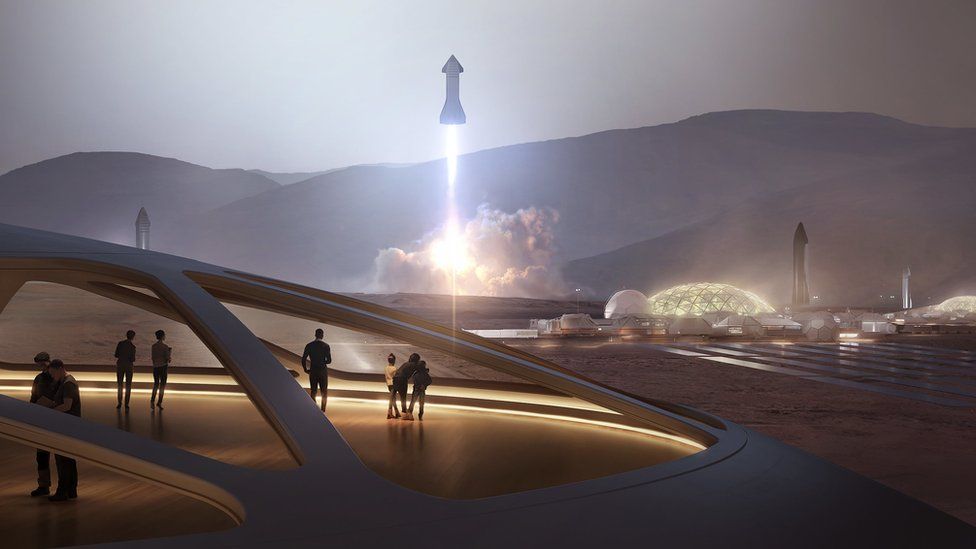
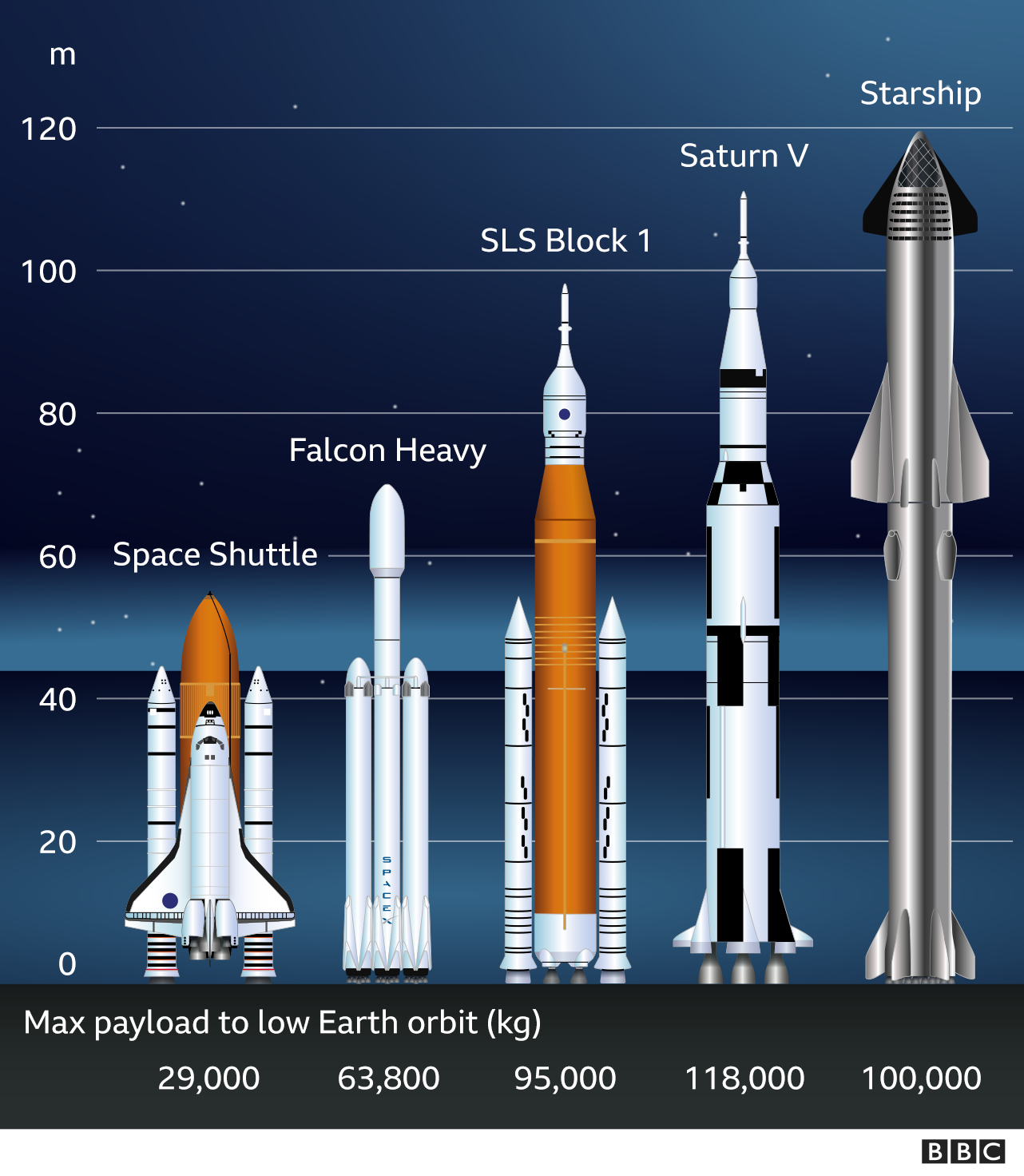
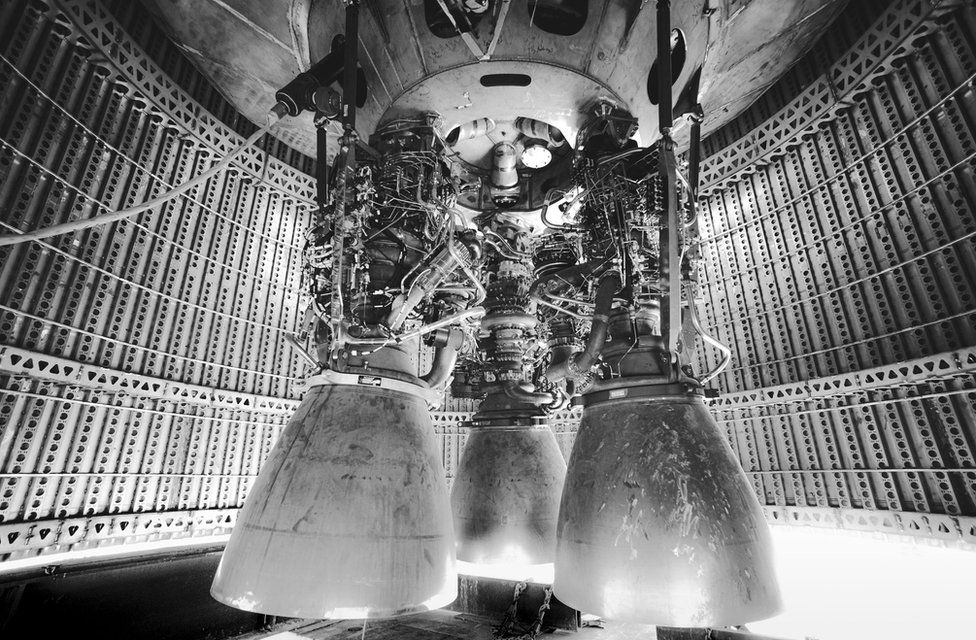
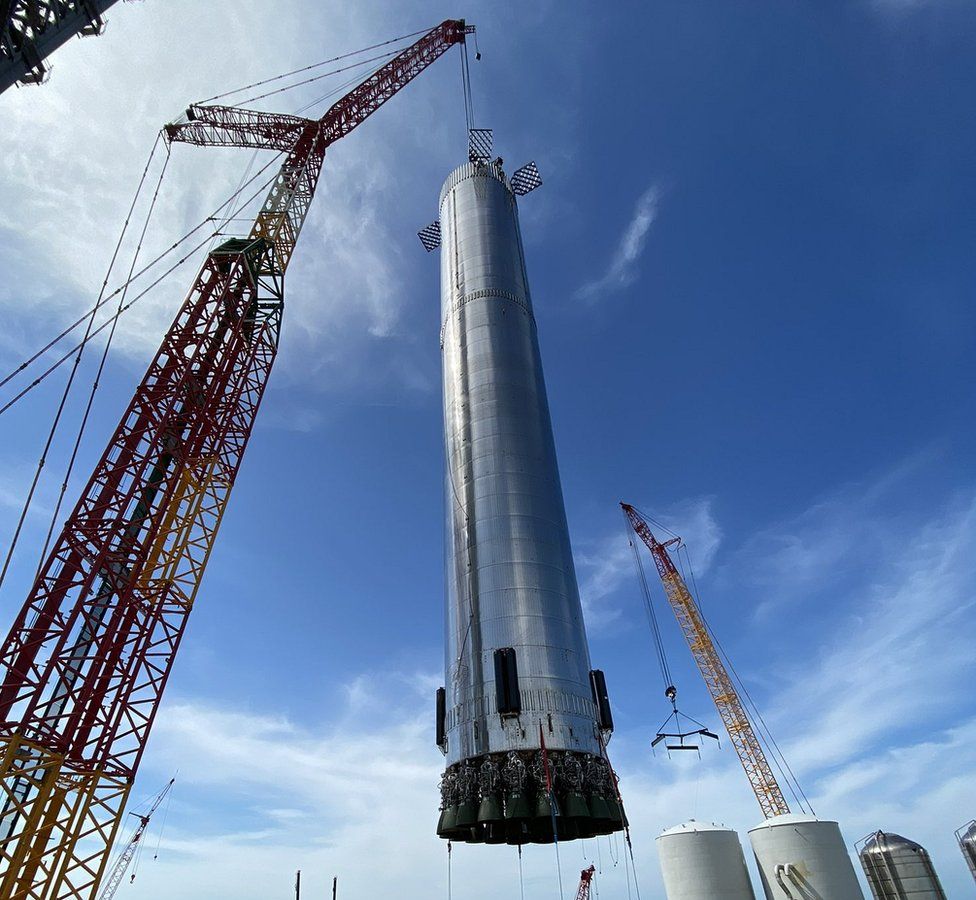
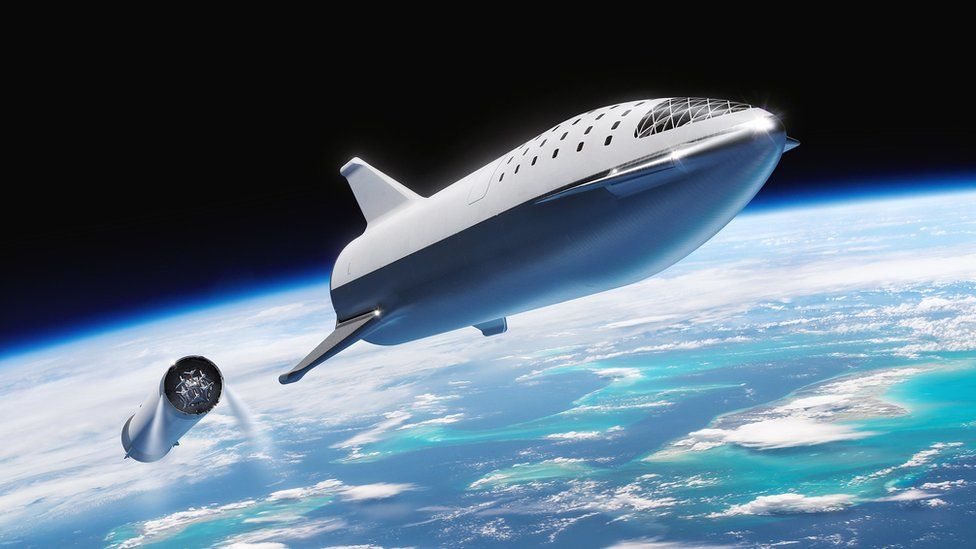
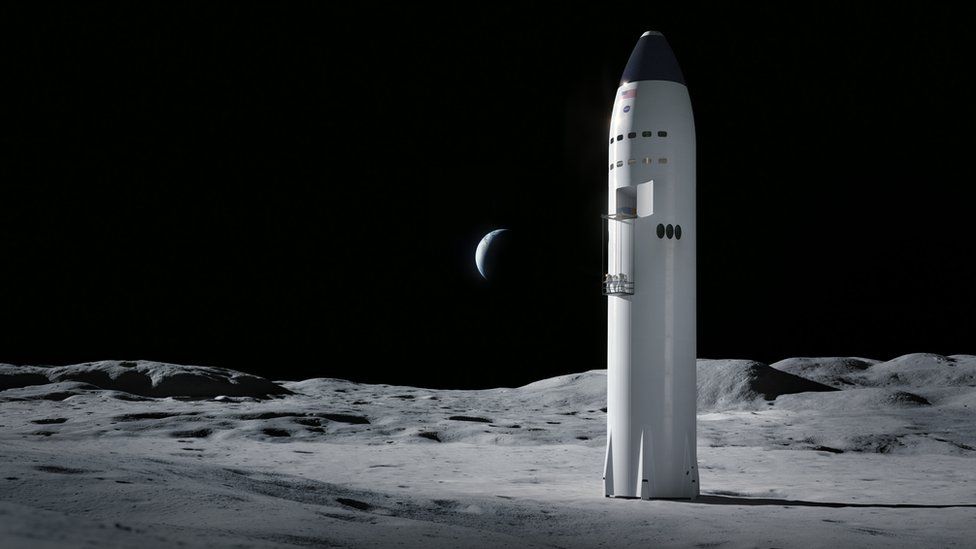
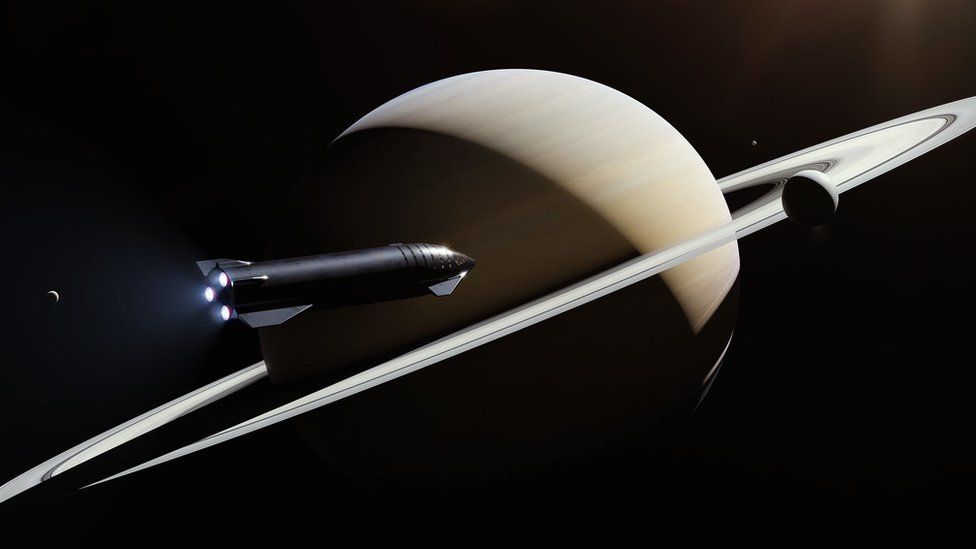
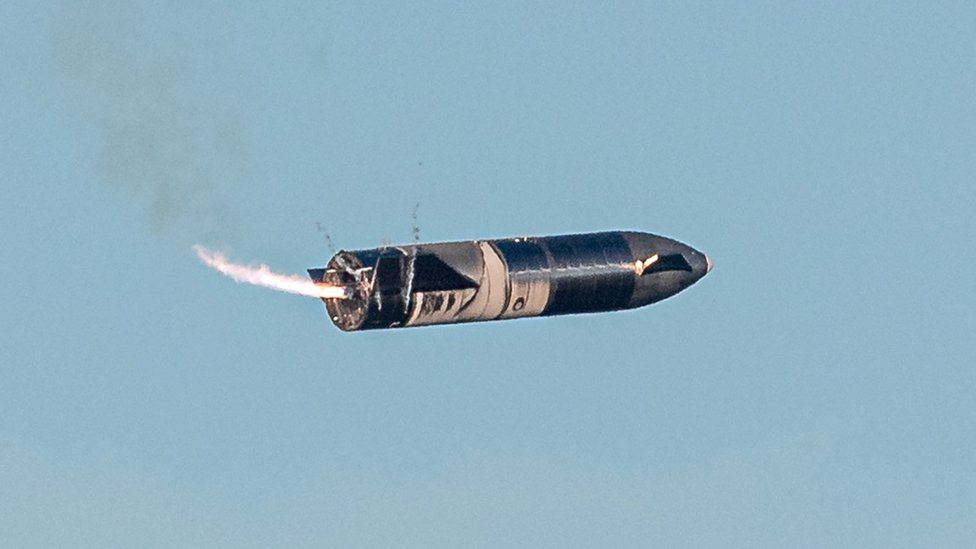

Comments
Post a Comment